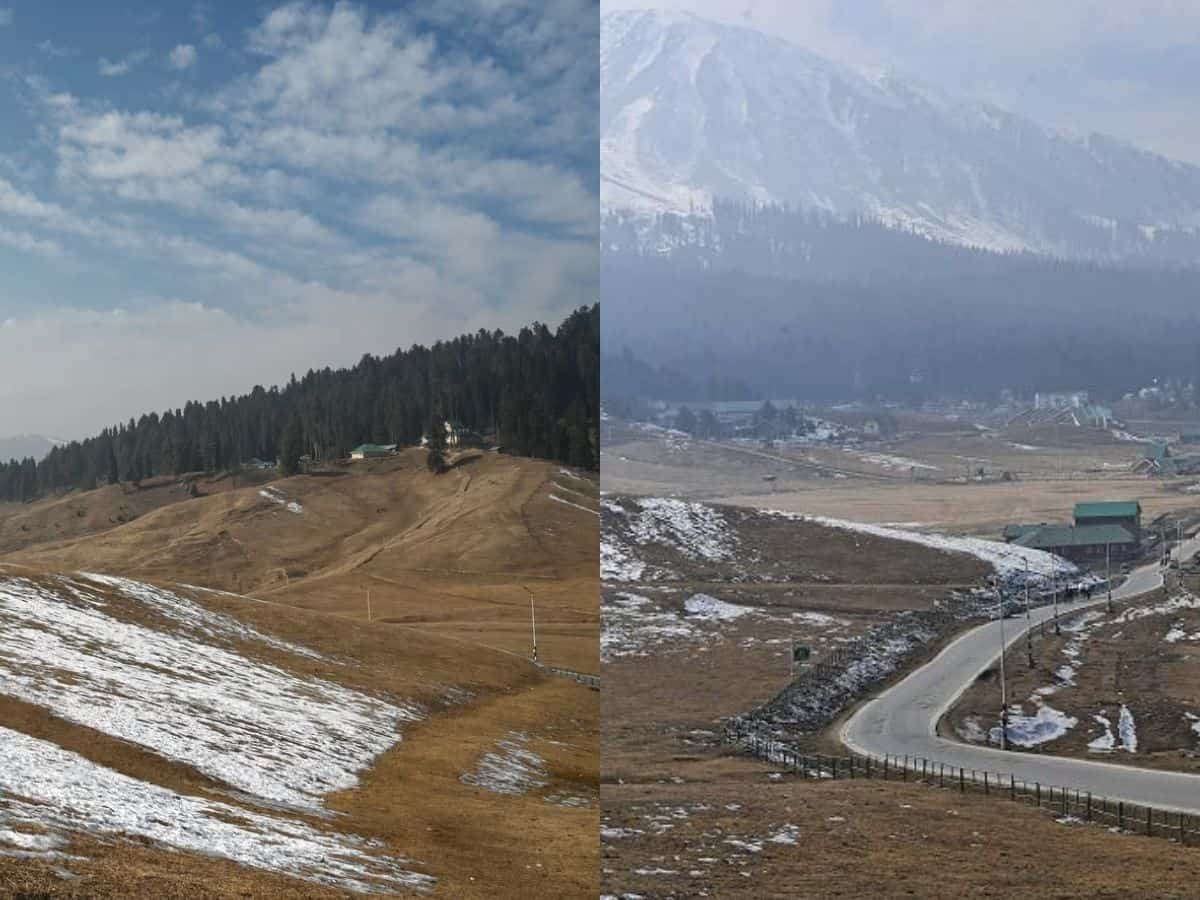
The world-famous tourist destination and ski resort Gulmarg, which attracts travelers through its scenic beauty of the Himalayan mountains covered with snow, is suffering a dry winter this year. Popularly known as Kashmir’s wonderland, the town is facing a shortage of snow, which doesn’t only concern the skiers but also the tourism sector of Kashmir. Apparently, the snow deprivation is attributed to the harsh effects of global warming on India’s winters.
Along with many other tourism destinations, including Pahalgam, the picturesque town barely received any snow. While the capital city of Srinagar did not receive any snow at all, a video posted by ANI, a news agency, on X showed the town appearing to be dry and barren due to the lack of snow.
By this time of the year, the areas that receive 3–4 feet of snow are hardly witnessing any snow because of this long dry spell. Furthermore, the pictures comparing Gulmarg in January 2023 with Gulmarg in January 2024 are doing the rounds on social media. One picture shows the area covered with a thick snow blanket with no ground visible, while the other shows the barren ground with no snow covering.

El Niño phenomenon
Kashmir has experienced a dry spell with a 79 percent shortage of rainfall and an absence of snow this winter. Meanwhile, the experts have also suggested that there is no immediate relief anticipated as dry weather conditions are going to persist until January 12.
Director of Kashmir Meteorological Center Mukhtar Ahmad told ANI that the valley has been dry throughout December and the first week of January. With no major precipitation chances, the weather may remain dry until January 16.
“There was a pattern of early snowfall for the last three to four years, which is missing this year. There is no major spell. El Niño has persisted since November and may continue till next month,” he interpreted.
El Niño is a natural climate phenomenon borne out of the unusually warm surface temperatures of the sea in the eastern Pacific Ocean near the equator. This weather phenomenon is likely to raise the heat in 2024 as well.
“This is not the first time that we have experienced a dry spell. We saw it in 2022 and December-January of 2018, January of 2015, and December of 2014,” Ahmad was quoted by the Hindustan Times.
Additionally, the absence of western disturbances, which bring snowfall in the higher reaches and rain in the plains, has resulted in no major snowfall so far, which is likely to continue this month, NDTV wrote, citing the India Meteorological Department (IMD).
Effects on tourism
Kashmir’s tourism sector plays a significant role in its economy. However, with no snow this year, tourists have begun to cancel their trips to Gulmarg. Moreover, if the spell continues, the Khelo India Winter Games that are to be held on February 2 will also be affected by the bare minimum snowfall.
Glaciologist and Himalayan researcher AN Dimri told the Press Trust of India that “it can have a huge cascading effect on socioeconomic activities if the dry spell persists.
“If you don’t get enough snow, you don’t get replenishment of water; it will impact agriculture, your health, and, in turn, your economy,” he explained.

